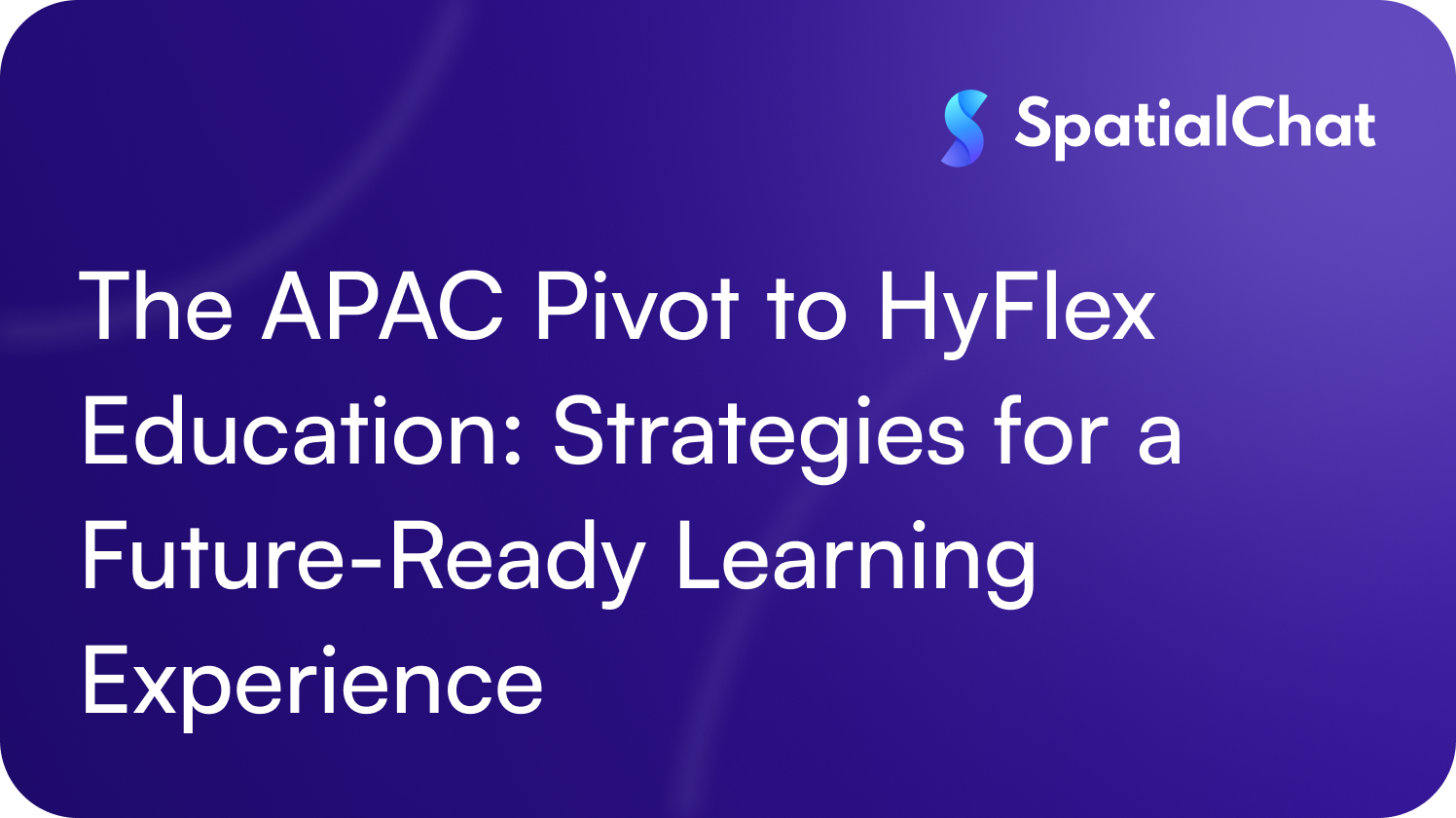The Asia-Pacific region is undergoing a significant transformation in higher education as institutions embrace HyFlex models to meet the evolving expectations of students and educators. With hybrid and flexible learning becoming the new standard, universities across APAC are rethinking their digital strategies, not just to deliver education remotely, but to foster meaningful, human-centered experiences across physical and virtual environments.
A Changing Landscape of Learning
The rapid digitalisation of education during the pandemic created both opportunities and challenges. While technology enabled continuity, it also exposed deep gaps in infrastructure, faculty readiness, and student engagement. As higher education transitions from emergency remote teaching to more sustainable hybrid models, one truth has emerged: successful digital learning requires more than just access to tools. It demands strategic planning, continuous faculty development, and intentional course design.
Faculty Development Is Crucial
At the heart of effective HyFlex education lies empowered faculty. Institutions are realising that without sustained support and training, even the best technology falls flat. To navigate hybrid teaching effectively, educators must develop a combination of digital fluency and soft skills. Traits such as curiosity, inclusivity, and adaptability are increasingly vital as faculty explore diverse teaching formats and technologies that can cater to varied student needs.
Encouraging experimentation, providing mentorship, and fostering a culture of learning among educators are key steps. Universities are beginning to offer structured training programs that go beyond one-off tech tutorials. Instead, these programs aim to build long-term capacity, helping educators design synchronous and asynchronous experiences that are both pedagogically sound and technologically seamless.
Choosing the Right Technology—And Making It Work
Another challenge for institutions is identifying technologies that support rather than hinder the teaching process. While the market offers a wide range of tools, the real value lies in selecting platforms that align with faculty workflows and student expectations. Making technology feel familiar and intuitive is essential to boost adoption and encourage innovation in the classroom, virtual or otherwise.
Rather than overwhelming educators with multiple systems, some institutions are now standardising platforms, integrating learning analytics, and offering real-time support to reduce friction. This thoughtful approach not only streamlines operations but also empowers faculty to focus on what truly matters: creating engaging learning environments.
The Rise of Flexible Learning Models
As hybrid learning evolves, flexible delivery models are gaining ground across APAC. Institutions are increasingly moving toward HyFlex setups where learners can choose between attending classes in person, joining synchronously online, or accessing recorded content later. This approach not only offers convenience but also supports inclusion, particularly for students who face geographical, financial, or accessibility barriers.
Some universities have even coined their own variations of flexible learning to better reflect local needs and cultural contexts. The unifying goal, however, remains consistent: to ensure quality, equity, and engagement across all modes of delivery.
Data-Driven Personalisation
One of the most promising trends in HyFlex education is the use of data to inform teaching strategies. Learning analytics can offer valuable insights into student engagement, attendance patterns, and academic progress. By collecting and analysing this data, educators can personalise interventions, identify struggling students early, and fine-tune course content for better outcomes.
While the use of data in education is still in its early stages across many APAC institutions, the potential is vast. As systems become more sophisticated, they will enable proactive teaching where support can be provided in real time based on actual student behaviour, not just assumptions or end-of-term results.
Strengthening Industry Partnerships
As the job market itself becomes more hybrid and digitally oriented, institutions are also working to close the gap between academic learning and real-world demands. Collaborating with industry partners to co-design curriculum, offer experiential learning, and integrate career-oriented projects into hybrid formats is becoming increasingly important.
These partnerships help ensure that students are not only gaining academic knowledge but also building the skills and mindsets required to thrive in flexible, modern workplaces.
The Road Ahead
The evolution of HyFlex education in APAC is not just a response to the pandemic, but a proactive step toward building a more resilient, inclusive, and forward-looking education system. By prioritising faculty development, investing in the right technologies, leveraging data, and deepening ties with industry, institutions can create learning experiences that are not only effective, but truly transformative.
